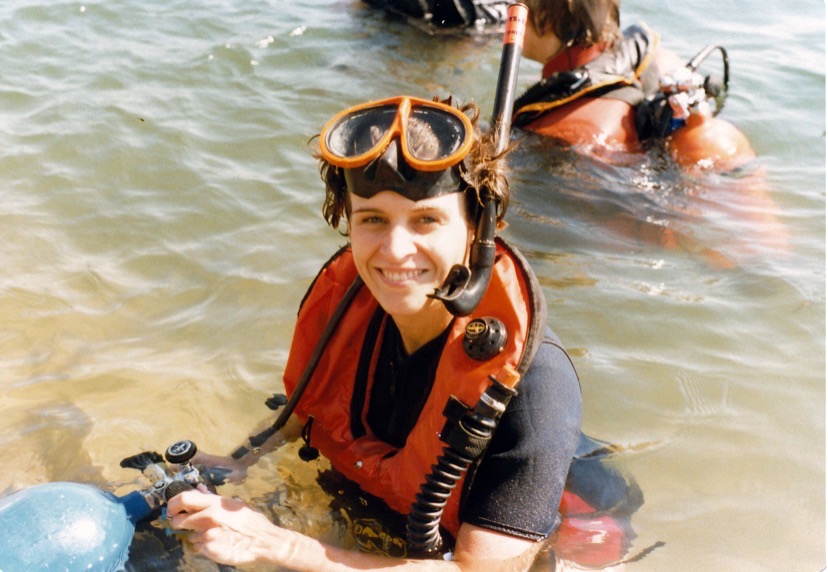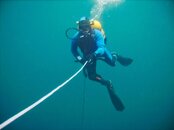I learned with those. And they are usually handed out on snorkel boats. On the odd occasion I do a snorkel excursion, I try to be last off the boat to look at the guys jumping in without holding the horse collar down.It was the crotch straps that made horse collars infamous, a wee bit of air and you could sing soprano.
You are using an out of date browser. It may not display this or other websites correctly.
You should upgrade or use an alternative browser.
You should upgrade or use an alternative browser.
Do I "Need" a BC
- Thread starter gmerick
- Start date
Please register or login
Welcome to ScubaBoard, the world's largest scuba diving community. Registration is not required to read the forums, but we encourage you to join. Joining has its benefits and enables you to participate in the discussions.
Benefits of registering include
- Ability to post and comment on topics and discussions.
- A Free photo gallery to share your dive photos with the world.
- You can make this box go away
Do I need one? no. Last trip I put 6lbs and never inflated it. By mid-dive, I had to pay attention to my breathing to not float up too much. Witched to 8lbs and a bit of air at the beginning and it was more enjoyable. I also enjoy just inflating it and floating waiting for the boat.
A horse collar type BC is not a snorkel vest. When using a horse collar buoyancy compensator it was put on first so that it was below the scuba harness and the weight belt of course went on last.
I have already put this pic in once during this thread but here it is again. Notice that it has a pull dump, an over pressure valve and a power inflator. It also has a CO2 cartrdge for emergency surface inflation. This unit will indeed float an incapacitated diver face up with the airway clear of the water when fully inflated and with the weight belt dropped. The snorkel vests that are given out on snorkel cruises are not a BC. However, way back, my first such device was simply a army surplus purchased Mae West life preserver. This is a military unit from SeaTec, the USD emblem was sewn on for fun:

Do not confuse those snorkel vests with a horse collar buoyancy compensator. My wife is seen here in 1979 with a Dacor SeaChute horse collar BC. it has a twin bladder design where the upper bladder was oral/CO2 inflated and the lower bladder was inflated using a power inflator and LP hose:

When giant striding into the water there was no need to hold the horse dollar BC down as the harness for it was underneath the scuba harness and weight belt and thus quite secure. It was not a universal practice then as it is often thought to be now to inflate your BC before entering the water, think about it! It was only relatively recent at that time that we even had a BC to inflate upon entry! And I still do not no matter how much chastising I get from whomever to inflate my BC upon entry.
I have already put this pic in once during this thread but here it is again. Notice that it has a pull dump, an over pressure valve and a power inflator. It also has a CO2 cartrdge for emergency surface inflation. This unit will indeed float an incapacitated diver face up with the airway clear of the water when fully inflated and with the weight belt dropped. The snorkel vests that are given out on snorkel cruises are not a BC. However, way back, my first such device was simply a army surplus purchased Mae West life preserver. This is a military unit from SeaTec, the USD emblem was sewn on for fun:

Do not confuse those snorkel vests with a horse collar buoyancy compensator. My wife is seen here in 1979 with a Dacor SeaChute horse collar BC. it has a twin bladder design where the upper bladder was oral/CO2 inflated and the lower bladder was inflated using a power inflator and LP hose:

When giant striding into the water there was no need to hold the horse dollar BC down as the harness for it was underneath the scuba harness and weight belt and thus quite secure. It was not a universal practice then as it is often thought to be now to inflate your BC before entering the water, think about it! It was only relatively recent at that time that we even had a BC to inflate upon entry! And I still do not no matter how much chastising I get from whomever to inflate my BC upon entry.
old frogman
Contributor
The real deal used by recreational divers, commercial divers and military divers. The Fenzy BC. Has a cylinder of air on the back of the BC. Invented by the French Navy and marketed by Maurice Fenzy.A horse collar type BC is not a snorkel vest. When using a horse collar buoyancy compensator it was put on first so that it was below the scuba harness and the weight belt of course went on last.
I have already put this pic in once during this thread but here it is again. Notice that it has a pull dump, an over pressure valve and a power inflator. It also has a CO2 cartrdge for emergency surface inflation. This unit will indeed float an incapacitated diver face up with the airway clear of the water when fully inflated and with the weight belt dropped. The snorkel vests that are given out on snorkel cruises are not a BC. However, way back, my first such device was simply a army surplus purchased Mae West life preserver. This is a military unit from SeaTec, the USD emblem was sewn on for fun:
Do not confuse those snorkel vests with a horse collar buoyancy compensator. My wife is seen here in 1979 with a Dacor SeaChute horse collar BC. it has a twin bladder design where the upper bladder was oral/CO2 inflated and the lower bladder was inflated using a power inflator and LP hose:
When giant striding into the water there was no need to hold the horse dollar BC down as the harness for it was underneath the scuba harness and weight belt and thus quite secure. It was not a universal practice then as it is often thought to be now to inflate your BC before entering the water, think about it! It was only relatively recent at that time that we even had a BC to inflate upon entry! And I still do not no matter how much chastising I get from whomever to inflate my BC upon entry
I trained with a collar with the crotch strap.A horse collar type BC is not a snorkel vest. When using a horse collar buoyancy compensator it was put on first so that it was below the scuba harness and the weight belt of course went on last.
I have already put this pic in once during this thread but here it is again. Notice that it has a pull dump, an over pressure valve and a power inflator. It also has a CO2 cartrdge for emergency surface inflation. This unit will indeed float an incapacitated diver face up with the airway clear of the water when fully inflated and with the weight belt dropped. The snorkel vests that are given out on snorkel cruises are not a BC. However, way back, my first such device was simply a army surplus purchased Mae West life preserver. This is a military unit from SeaTec, the USD emblem was sewn on for fun:
Do not confuse those snorkel vests with a horse collar buoyancy compensator. My wife is seen here in 1979 with a Dacor SeaChute horse collar BC. it has a twin bladder design where the upper bladder was oral/CO2 inflated and the lower bladder was inflated using a power inflator and LP hose:
When giant striding into the water there was no need to hold the horse dollar BC down as the harness for it was underneath the scuba harness and weight belt and thus quite secure. It was not a universal practice then as it is often thought to be now to inflate your BC before entering the water, think about it! It was only relatively recent at that time that we even had a BC to inflate upon entry! And I still do not no matter how much chastising I get from whomever to inflate my BC upon entry.
Little context...the yellow 'Mae West pneumatic life preservers of WW2' and then Korea [VN?] had two CO2 inflators on two bladders and an oral inflator....in '55 we separated the bladders and wore a single bladder with CO2 and oral inflator....never once did any of us ever use this flotation....we weighted for trim without these precursors to the horse collar BCDs.....early on Jim Stewart the 2nd SIO Diving Safety Officer did not allow any BCDs during his training of divers...learn how to trim without a crutch and while wearing primarily wet suits....
Same time the BSAC termed what we called the 'horse collar BCD' an "ABLJ" or 'Adjustable Buoyancy Life Jacket'...my experience has been as John pointed out, only the horse collar BCD when inflated will float an unconscious diver face up and out of water....stab jackets may come close but usually the head [airway] is partially in the water....
I could care less what floatation you dive with or even if you don't wear an adjustable buoyancy system.....make your own call...bottom line depend on judgement and watermanship....just respect the choices of others....reasonable right?
Also comments about freediving enhancing ALL diving skills is so true. In my opinion all diver training should start with freediving skills.
Freediving develops skills and in-water self-sufficiency while exposing weaknesses that may or may not be able to be corrected. Not all folks should be diving.
Same time the BSAC termed what we called the 'horse collar BCD' an "ABLJ" or 'Adjustable Buoyancy Life Jacket'...my experience has been as John pointed out, only the horse collar BCD when inflated will float an unconscious diver face up and out of water....stab jackets may come close but usually the head [airway] is partially in the water....
I could care less what floatation you dive with or even if you don't wear an adjustable buoyancy system.....make your own call...bottom line depend on judgement and watermanship....just respect the choices of others....reasonable right?
Also comments about freediving enhancing ALL diving skills is so true. In my opinion all diver training should start with freediving skills.
Freediving develops skills and in-water self-sufficiency while exposing weaknesses that may or may not be able to be corrected. Not all folks should be diving.
Similar threads
- Replies
- 15
- Views
- 1,389
- Replies
- 31
- Views
- 3,447
- Replies
- 7
- Views
- 698





